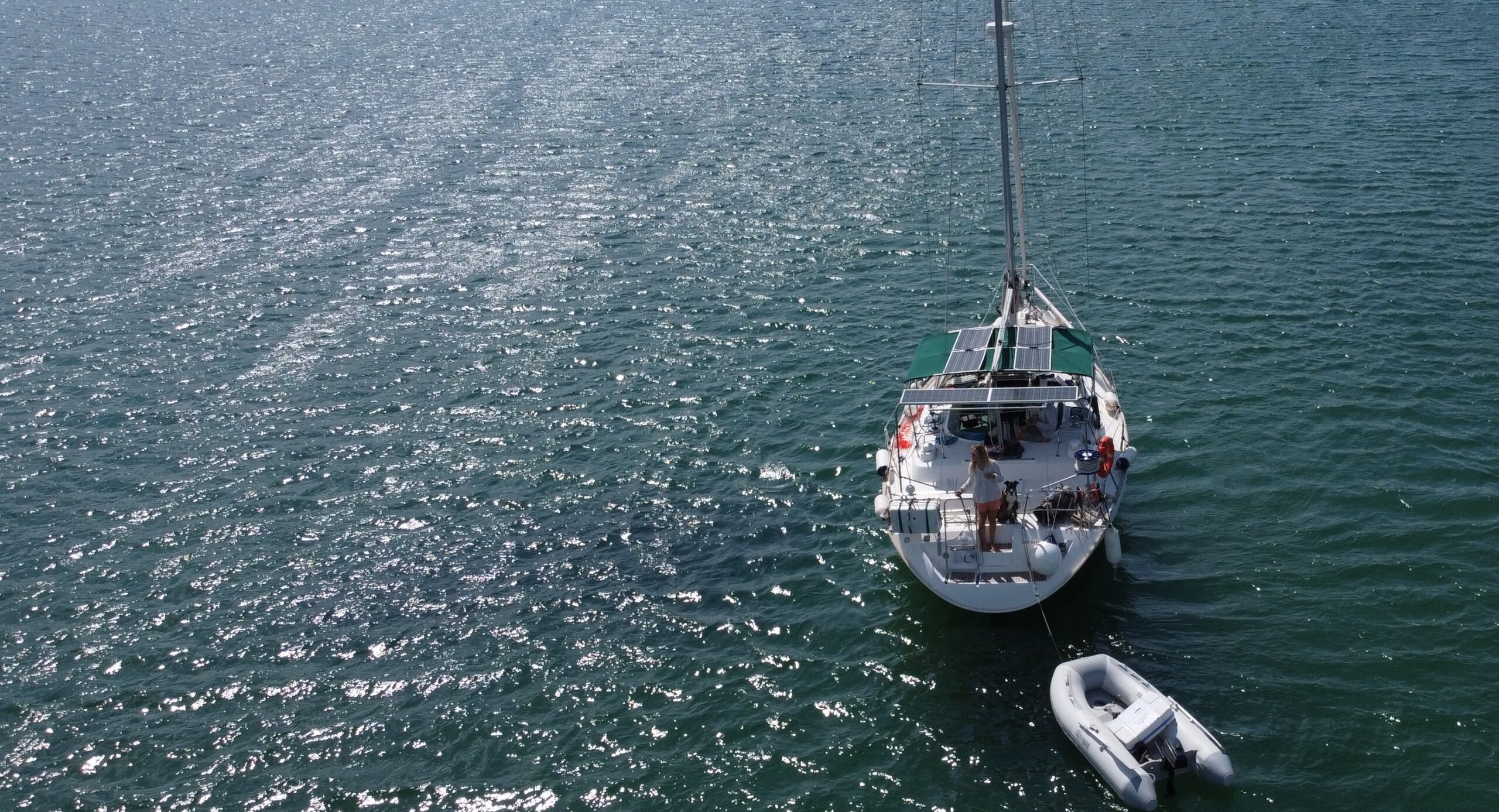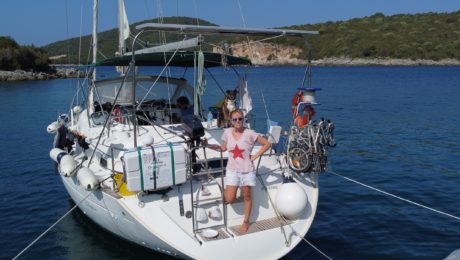Let’s start with the first tip.
First off, if this is a new boat you’re unfamiliar with, I recommend you study her inside and out before sailing out. Learn all the faults, the location of all the safety equipment (and make sure it isn’t expired), how the sails work, and even open them when you are docking/shipping to make sure you know exactly how to do so correctly.
Correct docking (with a single anchor in an open bay)
Let me clear things up. It is better to do your first docking at a relatively clear bay with little or no wind. These are the ideal conditions that will give you the boost of confidence you’ll need in order to dock in a more complex situation. But not everything can be perfect, and even if Neptune didn’t arrange the perfect waters for your first docking, it’s really not that bad. You need to take into account several measures:
Take a tour around the boat before docking to get to know the surrounding and pick the best stop for you to dock.
In terms of the docking itself - you will always have the bow of your yacht facing the wind. You make sure that the boat is at a full stop and then begin to drop the anchor whilst simultaneously steering the boat backwards. The basic ground rule is to loosen at least 30m of chain, and if the winds are strong, or the ground is deeper than 10m, you can even loosen more. All this assuming you have enough room to do so.
Your ship has a rotation axis when she is docked and while anchored it will always face the wind. So, you need to make sure that if the winds change, which they usually do, she won’t rotate and clash with other anchors or run over the different obstacles around you.
Do your best to find the right kind of ground for your type of anchor. Most anchors work best with a sandy surface. A lot of places have these little patches of sand mixed with seaweed and rocks. If you drop your anchor on grass or rocks, usually the anchor won’t stick. If this happens, you will need to start over.
If you are docking when the winds are strong, you can drop your anchor with speed. Thus meaning the anchor chain opens faster, and the docking can be done quicker. This is where speed really matters - the faster your ship is, the more control you have over her.
Weather
We use an app called Windy. It’s very easy and user-friendly. What we especially like about it is that it shows the weather on a map, and then you can see the wind (or any other parameter you’re interested in) simultaneously at all locations. It’s very important to look at all “layers”. This means not only checking for wind but also clouds, waves, and their direction, fog, and rain. It’s not always sufficient to look only at the winds, and it’s important to always have the full image. This app has all that information with easy access.
Micro weather
It is absolutely crucial to do your research (read, watch videos and consult with pros) regarding the local winds in the places you plan to sail. I have too many stories of days we had a perfect 15-knot wind, which turned into a nightmare the minute we found ourselves in specific spots with increased winds due to the morphology of the specific location.
For instance, a narrow passage between two islands will usually cause the wind to increase by about 5 knots, same for low cloud coverage, which can be crucial if you’re sailing with open sails, and suddenly get hit with a strong wind and not enough time or ability to properly prepare (like narrowing down the sails or sometimes even closing them if necessary).
Navigation
We use Navionics. It’s an app that costs money but is totally worth it. We rely almost entirely on it, and it’s super accurate and updated. I strongly advise you to travel shorter distances for your first sailings. This way you can get acquainted with your yacht, her speed, and her general behavior on the water.
Always take extra precautions and be on the safe side. You’ll be able to avoid having to get to the docking stage when it’s dark (entirely possible at later stages, but still quite uncomfortable especially in a place you don’t know).
By the way, there are a lot of advantages to arriving at your docking spot early - it also ups your chances of finding a safer spot to dock. It’s important to study the app thoroughly before using it, to learn what the obstacles, ditches, and floaters look like. Needless to say, before heading out, make sure to go over your planned course to avoid any unwanted surprises on the way.
Anecdote - on our very first sailing we almost sailed straight into an underwater rock we didn’t even know existed! I wasn’t kidding when I said – “written in blood” (almost).
Planning and finding places to dock
The Navily app. This is an amazing app, programmed on recommendations and comments from other users. It has a lot of information about the type of ground in each location, the winds, the waves, where in your area it’s best to dock, and even some tips on the best restaurants in the nearby town. The app also gives you information on where to find the safest spot from the waves.
Combined with the information we get from the Windy app, we can always tell whether or not this is the spot for us to spend our night.
Choose peace of mind. If you are sailing, you have a lot to think about - one thing that can help you ease into relaxation mode is boat insurance from Ahoy! Designed for boaters, by boaters, Ahoy! makes the process of getting boat insurance easy and hassle free!


